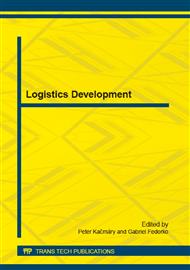p.107
p.113
p.119
p.125
p.130
p.136
p.141
p.148
p.153
Determinants of the Road Traffic Accident Rate in Slovak Republic
Abstract:
Traffic safety is an important topic because of serious economic burden which is linked to the problem (damage costs, health care costs, administration costs and costs resulting from loss of future output). In this paper, we model damage to property and accidents involving deaths and injuries in the Slovak Republic. Using secondary data, it was found out that accidents involving deaths and injuries, accidents caused by animals and accidents caused by speeding have a strong impact on damage to property. Interesting finding is, that number of registered drivers have a negative impact on damage to property. On the other hand, accidents caused by animals and accidents caused by speeding have a negative impact on accidents involving deaths and injuries. Moreover, expressways seriously diminish number of accidents involving deaths and injuries.
Info:
Periodical:
Pages:
130-135
Citation:
Online since:
December 2014
Authors:
Keywords:
Price:
Сopyright:
© 2015 Trans Tech Publications Ltd. All Rights Reserved
Share:
Citation:


